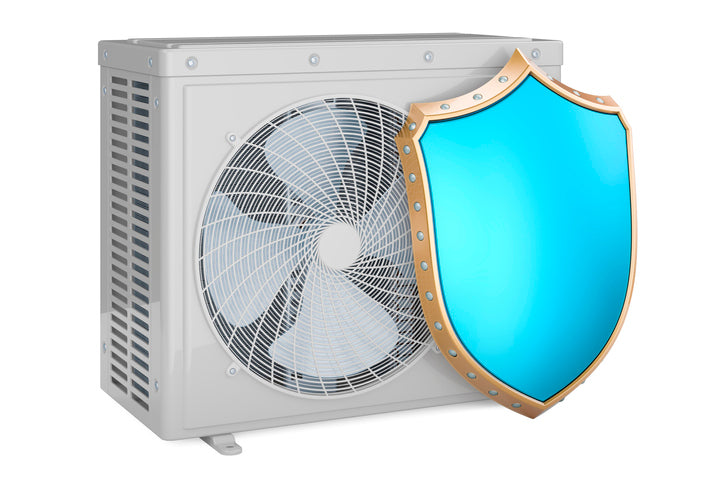What To Know About Your Thermostat Settings

Many are on the fence with their air conditioning units because the rising costs of utilities lead them to believe they can’t save enough money. But the truth is, you can save if you’re managing your energy consumption properly.
If you remain consistent with the advice we give you, you can seriously save large percentages on your monthly energy bill. You may even sleep better and feel more productive during the day. Here is a rundown of what to know about your thermostat settings for the best possible energy savings to keep you comfortable and saving year-round.
Submit an Inquiry To the Department of Energy
If you’re curious about your energy consumption and conservation statistics, you can always call the Department of Energy. They can locate you by zip code and determine the averages for your area so you’ll know whether you’re spending more or less than you should.
Inquiring the DoE would also be a good point of reference for extreme conditions and gaining knowledge on how weather patterns contribute to the rise and fall of living costs; and what to do in these instances. Having references like these on hand is helpful for effectively managing your energy situation. Keep their information nearby in case you need to call them in the event of an energy emergency in your area.
Summertime Thermostat Regulations for Comfort
When you’re at home, we recommend that you set your thermostat to no less than seventy-eight degrees Fahrenheit during the daylight hours; and while you’re away, you’ll want to dial it up seven to ten degrees from its current setting. Doing so will prevent the unit from coming on while you’re gone. It will also help to check it periodically as the temperature gets hotter through the season. You’ll never go back to how things were once you realize the savings you’re making from these adjustments.
Wintertime Adjustments for Proper Energy Savings
Your settings will be similar to the summer season, but you’ll need to adjust in the opposite direction. You’ll want to keep your thermostat somewhere around sixty-eight degrees Fahrenheit during the daylight hours. We even suggest that you dial it down to sixty-five degrees.
When you do this, you’ll drop your bills by five to fifteen percent at roughly one percent per degree, which isn’t too bad. The greatest part about managing your energy consumption in the winter is that you can practically go without any air conditioning in the daylight hours if your home has the proper insulation. With proper insulation and winter thermostat settings, you’ll have massive savings leading into the summer months.
Vary Your Adjustments During the Spring and Fall
The moderate and milder spring and fall seasons tend to have variable weather conditions. Due to this unpredictability, you’ll need to watch your thermostat more often and adjust accordingly, so you don’t get too hot or cold. When you are experiencing cooler temperatures, you’ll want to adjust your thermostat to sixty-eight degrees Fahrenheit during the day and around sixty-five to sixty-three degrees Fahrenheit at night. You can set it to a flat sixty when you leave the house.
What You Should Do About Your Sleep Routine
You can create a healthy sleep routine when you have the right thermostat setting at night. Too hot, and you can’t sleep. Too cold, and you’ll shiver all night and waste energy trying to stay warm, with the addition of not sleeping well. So, the ideal heating temperature setting for sleeping is sixty-five degrees Fahrenheit in the winter and a cool setting of seventy-eight degrees Fahrenheit in the summer. The same rules apply during spring and fall, but it will depend on whether it’s warm or cold on that particular day. You’ll notice things like higher productivity throughout your day and lowered risk of heart disease; your immune system will even improve with proper sleep.
Utilize Ceiling Fans To Reduce Energy Consumption
One of the best ways to regulate the thermostat inside your house is by moving the air throughout the rooms of your house. If you have already cooled your house with air conditioning, simply adjusting the thermostat and turning on fans in occupied rooms will create a wind chill that will keep you cool and comfortable even in the hottest temperatures. Using your ceiling fans will lessen the blow of having to blast your air conditioner all summer and improve its longevity.
Another benefit of using your ceiling fans is that, depending on the direction, you can save money on your cooling and heating while you cool and heat your home more efficiently. Set your fan blades to spin counterclockwise in winter. The fan will pull and disperse the heat from the room and the air conditioning unit upward and outward.
This motion recirculates the heat more evenly throughout the room to heat it more efficiently. Setting the fan blades to spin clockwise in the summer pushes heat down and pulls cold air up, giving a cooling effect, even when the air conditioner is off.
Convert Specific Areas for Mini Splits
If you have troublesome areas of your home that don’t heat or cool well due to poor circulation or improper home design planning, consider investing in ductless mini split units. You can easily set up these modernized air conditioning units at a fraction of the cost of a traditional air conditioner. They can fully function in the room you want to condition without the need for a duct system.
With these mini split units, you won’t ever worry about being uncomfortable in those hotspots of the house again. You can even program your mini split unit to cut on and off at specific hours and temperatures. They won’t cut into the power your traditional unit uses, saving you even more energy and money over time.
Now that you know all that you need to know about your thermostat settings, you can confidently regulate your home year-round without fearing tremendous energy billing. Using these tips will also increase your units’ longevity and allow you greater financial independence.







